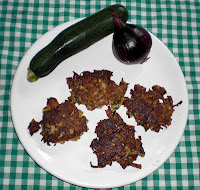It's all very well when a restaurant menu states that a dish is served, say, a la bonne femme. But if they don't give an explanation and you're not sure, then your choice is to ignore it, risk it, or ask the staff.
 |
| by Richard North via Flickr.com |
(a) produced by a female chef
(b) rustic food served simply
(c) with asparagus.
2 Lyonnaise
(a) prepared or garnished with onions
(b) with a clear sauce of white wine and parsley
(c) with a dark sauce containing chervil.
3 En Papillote
(a) snipped to resemble a butterfly
(b) sealed in foil or parchment and oven-cooked
(c) encased in breadcrumbs and shallow fried.
 |
| by Sebastian Mary via Flickr.com |
4 a la Grecque
(a) garnished with feta cheese then grilled
(b) with olives and sundried tomatoes
(c) vegetables cooked with herbs, olive oil, lemon juice.
5 Chasseur (or cacciatore)
(a) cooked in a casserole with capers
(b) sealed in puff pastry and decorated with relevant pastry shapes
(c) in a sauce of mushrooms, onions and white wine.
6 Al Forno
(a) baked or roasted in an oven
(b) containing minced meat or meat substitute
(c) in a rich cheese sauce topped with breadcrumbs.
7 Chevaler (or chevalier)
(a) with each main ingredient served separately
(b) served on toast
 |
| by Paul Esson via Flickr.com |
8 Meuniere (French: farmer's wife)
(a) with a sauce of shallots, tarragon and red wine
(b) ingredients floured then fried in butter
(c) deep fried in oil and served with a lemon sauce.
9 Brunoise
(a) diced and braised in butter
(b) with a sauce made from browned/burnt flour, stock and garlic
(c) in a thick sauce, served in a savoury pancake.
10 Provencale
(a) a rich stew with crusty bread to mop up juices
(b) with olive oil, tomatoes and garlic
(c) a clear sauce, strong on rosemary, thyme and chervil.
Here are the answers:
1 (b) 2 (a) 3 (b) 4 (c) 5 (c) 6 (a) 7 (c) 8 (b) 9 (a) 10 (b)
If you feel like it, do let me know how you got on by commenting below.
PS Antonin Careme, in the early 1900s, declared that there are five basic sauces, and that all sauces are based on one of them. They are: Hollandaise - oil/fat and egg yolks, veloute - a thick, blond sauce of flour, stock and butter, bechamel - white sauce of flour, butter and milk, Espagnole - stock with herbs and tomatoes, and vinaigrette usually oil and vinegar. By the way, sorry no accents used with the French vocab - can't get them. Au revoir!



